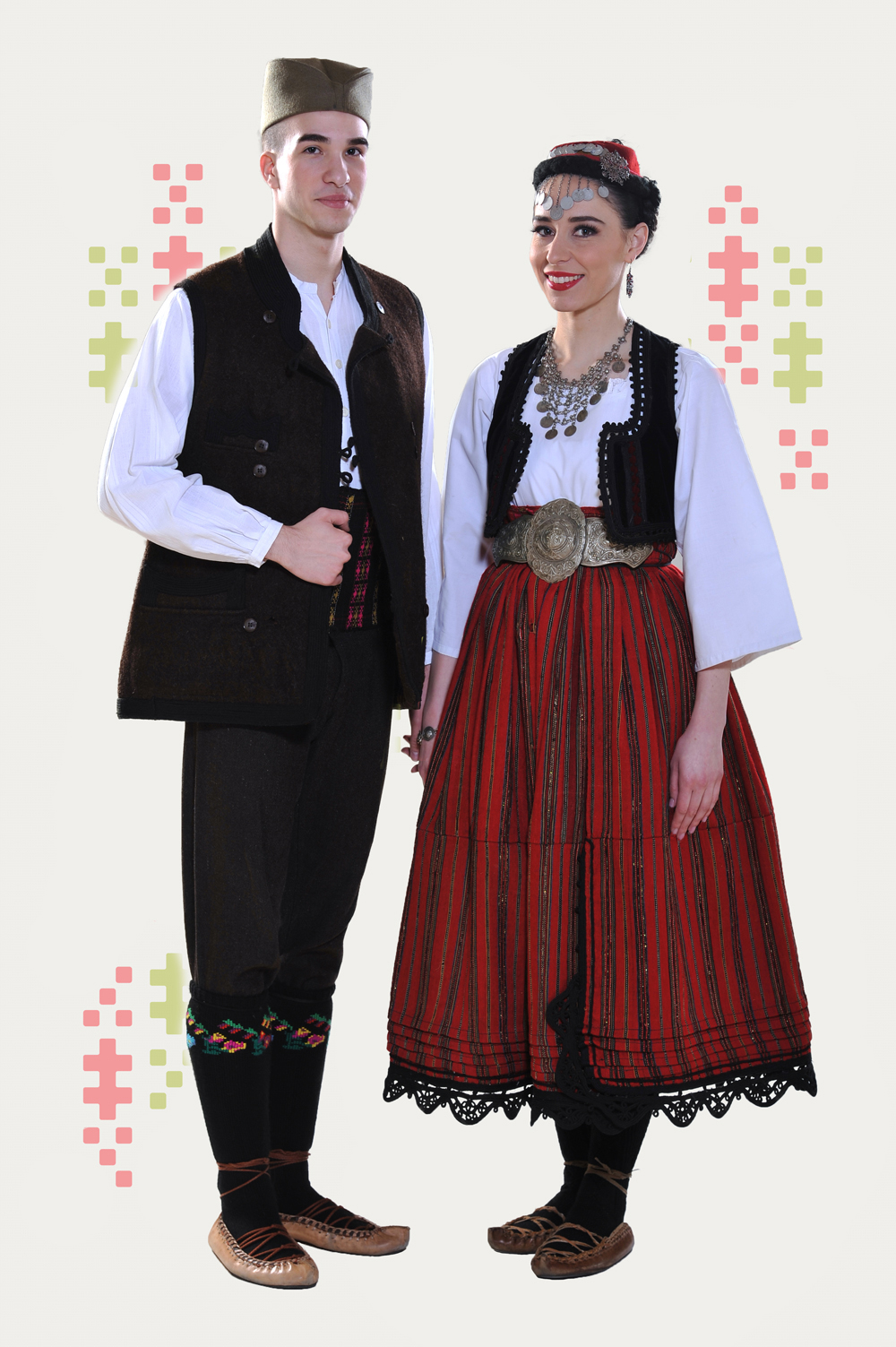


Vranjsko polje
One special characteristic of this folk costume is that women do not wear aprons. They wear futa or vuta. It is a type of gown which is not put on, but wrapped around the body. It consists of two parts of cloth, paying attention that coloured stripes overlap precisely, so that we get larger rectangular piece, 3 to 4m wide and 80 to 90cm long. A woman can wrap herself with it more times, but she wrapped herself only once. Futa is crinkled on a string which is used for tying around the waist, with one tiny end left for covering the lower end. It is not strictly determined how to tie futa, but it was mostly tied in such a way that the wrapping ended on the right hip. Futa developed in this area by gradual enlargement of front apron. It is always striped and the stripes are mostly dark in this area: black, dark red, dark blue and etc. They are usually woven from coloured wool or cotton. Older women`s futas are usually longer than girls` futas. Besides its many colours acquired by weaving, futa was also decorated in other way. There were bands and purchased lace on it, along the lower border, like on the urban skirts. If there were no bands, futas were decorated with satin. In later periods it was common for futas to be decorated with small band snails, made of lace with various ornamental motives.
Read more


